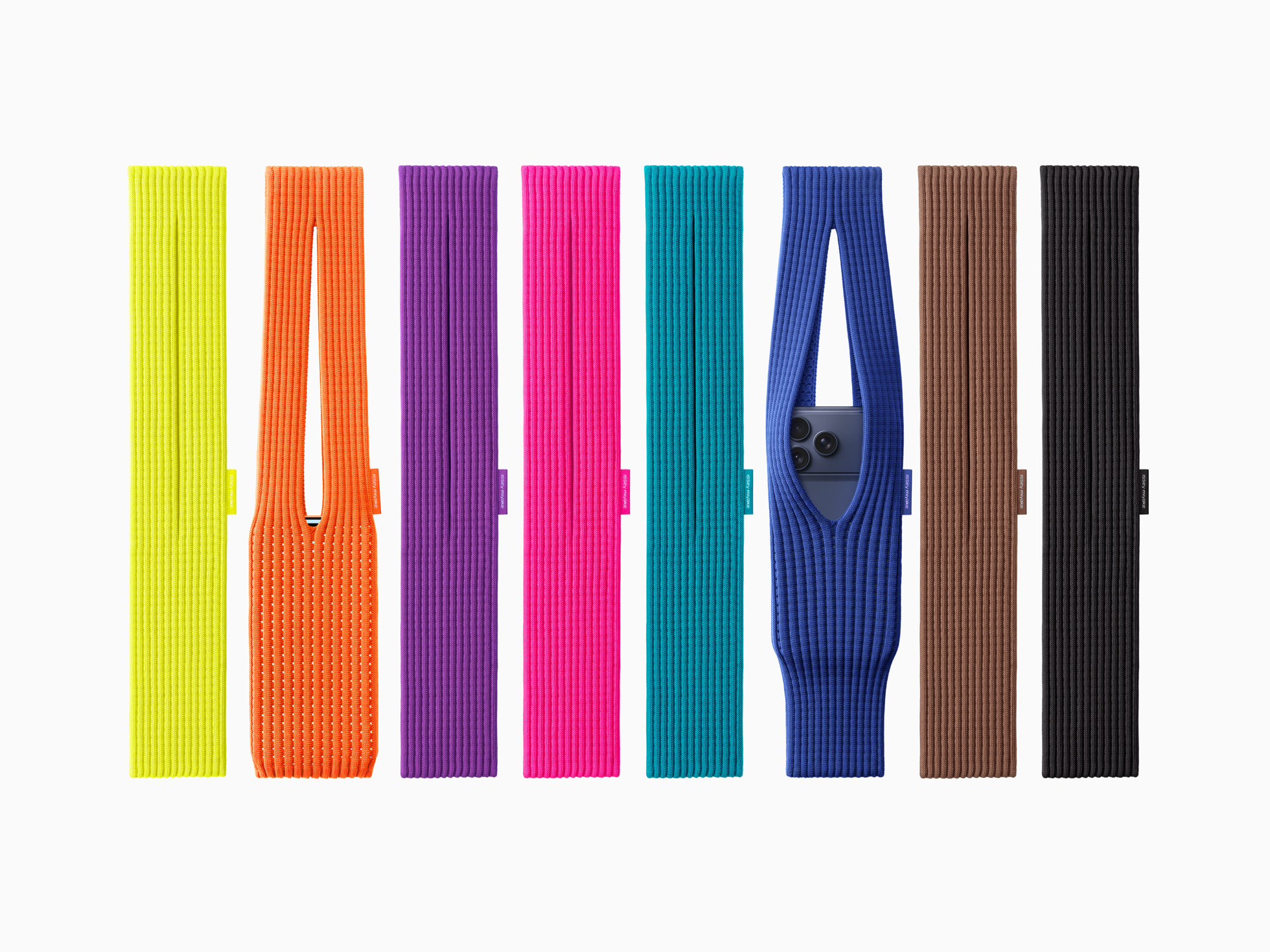
Apple, a company long synonymous with groundbreaking technology and minimalist design, has once again ignited public discourse with its latest accessory release: the iPhone Pocket. This unique cloth sling, a collaboration with the iconic Japanese fashion house Issey Miyake, carries a price tag that has drawn both fascination and derision across social media and tech forums. Retailing at $149.95 for the short version and $229.95 for the longer, crossbody style, the product follows in the footsteps of previous Apple accessories that have challenged conventional notions of value, such as its $19 polishing cloth. Yet, beneath the surface of what some perceive as an extravagant offering lies a nuanced narrative rooted in fashion innovation, brand strategy, and evolving consumer culture.
The Issey Miyake Legacy: Innovation Woven into Fabric
To understand the iPhone Pocket, one must first appreciate the design philosophy of Issey Miyake, the revered Japanese designer who passed away in 2022. Miyake was celebrated for his avant-garde approach to fashion, blending technology with traditional textile techniques to create garments that were both artistic and functional. His work frequently explored the relationship between the body and clothing, emphasizing comfort, movement, and innovative fabric manipulation.
A cornerstone of Miyake’s visionary work was the "A-POC" (A Piece Of Cloth) concept, which he pioneered in 1997. This revolutionary idea involved creating entire garments from a single, continuous tube of fabric, allowing wearers to cut and customize their clothing from pre-designed patterns embedded within the textile. This method not only minimized waste, aligning with contemporary sustainability concerns, but also empowered the wearer to become a co-creator of their own style. The iPhone Pocket directly references this heritage. Apple’s official description notes its inspiration from "a piece of cloth," highlighting a ribbed mesh structure that echoes Miyake’s signature pleats. The fabric’s elasticity allows it to stretch, subtly revealing the iPhone within while offering a glimpse of the device’s display, merging utility with a playful, interactive element. This design ethos aligns perfectly with Apple’s own commitment to sleek, user-centric products that often hide complex engineering beneath a simple, elegant exterior.
A Historic Connection: Jobs, Miyake, and the Birth of an Aesthetic
The collaboration between Apple and the Issey Miyake brand, though formalized posthumously for Miyake himself, is not an entirely new phenomenon. It represents the culmination of a long-standing, albeit indirect, relationship between two titans of design: Steve Jobs and Issey Miyake. Their paths famously intersected in the 1980s when Jobs, impressed by the uniforms he observed at Sony during a visit to Japan, approached Miyake with the idea of designing similar attire for Apple employees. While Apple’s workforce largely rejected the concept of a corporate uniform, Jobs himself remained captivated by the idea of a signature look.
This personal preference led to a direct collaboration between Jobs and Miyake, resulting in the creation of Jobs’ iconic black mockneck shirt. This simple, elegant garment became an integral part of Jobs’ public persona, symbolizing the understated sophistication and focused innovation that defined Apple under his leadership. The mockneck transcended mere clothing; it became a visual shorthand for a particular brand of genius and minimalist aesthetic. This historical precedent imbues the iPhone Pocket with a layer of legacy, suggesting that Apple’s venture into high-fashion accessories is not merely a fleeting trend but a continuation of a deeply rooted appreciation for design excellence shared by its founders. Even without Miyake’s direct involvement in the Pocket’s design, the product evokes a powerful lineage connecting two creative visionaries.
Apple’s Strategic Foray into Luxury Lifestyle
The introduction of the iPhone Pocket can be viewed as a strategic move by Apple to further entrench its brand in the luxury lifestyle market. While Apple products have always occupied a premium segment, the company has increasingly expanded into accessories that blur the lines between technology and fashion. This isn’t just about functionality; it’s about extending the Apple ecosystem into personal style and status signaling.
The tech giant’s ventures into high-priced, fashion-forward accessories serve multiple purposes. Firstly, it reinforces Apple’s image as a luxury brand, capable of dictating trends not just in electronics but also in personal adornment. Secondly, it allows Apple to tap into the lucrative high-end fashion market, a segment known for its high margins and discerning clientele. For consumers in this bracket, the price point of the iPhone Pocket is not a barrier but often an indicator of exclusivity and perceived quality. The perceived "ridiculousness" of the price, as some might call it, can paradoxically heighten its appeal for those seeking unique, conversation-starting items that differentiate them.
This move also reflects a broader trend among tech companies. As smartphones become ubiquitous and technological advancements incremental, brands seek new avenues for differentiation and revenue. Collaborating with established fashion houses like Issey Miyake lends immediate credibility and cultural cachet, elevating a utilitarian accessory into a coveted design object. It suggests that owning an iPhone is not just about having the latest gadget, but about embracing a particular lifestyle aesthetic that values design, heritage, and exclusivity.
The "Rage-Bait" Phenomenon and Consumer Psychology
The immediate, often polarized reaction to products like the iPhone Pocket highlights a fascinating aspect of modern consumer culture: the "rage-bait" phenomenon. When a high-profile brand like Apple releases an item with an unexpectedly high price tag or seemingly unconventional design, it often triggers widespread commentary, ridicule, and debate online. This outrage, however, can be a double-edged sword that inadvertently amplifies visibility and desire for the product.
For some, the iPhone Pocket is seen as an embodiment of corporate excess or a testament to blind brand loyalty. Critics might argue that a simple cloth pouch, regardless of its designer lineage, cannot justify a three-figure price. Yet, for others, particularly those familiar with the luxury fashion market, the pricing and concept are entirely understandable. High fashion often operates on principles distinct from pure utility or material cost. It encompasses brand prestige, design innovation, artistic vision, and the exclusivity of limited editions. The value is derived not just from the fabric, but from the story, the craftsmanship, and the cultural statement it makes.
In an era dominated by social media, products that provoke strong reactions often gain significant traction. The discussions, memes, and critiques generated around items like the iPhone Pocket serve as a form of viral marketing, raising awareness far beyond traditional advertising channels. This public discourse, whether positive or negative, contributes to the item’s mystique and desirability for its intended audience, who may view it as a knowing nod to fashion’s playful side or a statement against conventional consumerism.
The Rise of Accessories for Accessories
The iPhone Pocket also aligns with a burgeoning cultural trend: the accessorization of accessories. In a world where smartphones are indispensable personal devices, they have evolved beyond mere communication tools to become central hubs for identity, commerce, and expression. Consequently, the items we use to carry or adorn our phones have become fashion statements in their own right.
The market has seen a proliferation of micro-bags, tiny tote bags, and specialized phone cases, all designed to carry little more than a smartphone, perhaps a credit card, and a lip balm. Brands from high fashion labels to popular lifestyle brands like Telfar, Free People, Baggu, Lululemon, and even IKEA have released miniature versions of their iconic bags, often intended to be attached to larger bags or carried as minimalist statements. This trend signifies a shift towards carrying only essentials, with the phone often being the most essential item.
The iPhone Pocket, especially its shorter version, taps into this desire for highly specialized, often whimsical, phone-centric adornments. Its conceptual kinship with items like the popular Labubu monster plush keychains is notable. Labubu, a designer art toy that gained immense popularity, commanded prices ranging from $30 for a "blind box" to thousands for rare editions. Like the iPhone Pocket, Labubu’s appeal often defied purely rational economic logic, becoming a coveted accessory for handbags and personal items. This phenomenon extends even to "accessorizing your Stanley Cup," where consumers personalize their hydration vessels with charms and pouches. These trends collectively underscore a cultural moment where personal items are not just functional but serve as canvases for self-expression, status, and participation in niche communities.
Practicality Meets Panache: Crossbody Phone Solutions
Beyond its high-fashion credentials, the iPhone Pocket also caters to the practical needs of modern smartphone users. The long, crossbody version of the iPhone Pocket directly builds upon the increasing popularity of crossbody phone accessories. In an increasingly cashless and keyless society, where mobile payment technologies like Tap to Pay and digital door locks are common, many individuals find they can navigate their daily lives with just their phone.
Crossbody phone straps and cases offer a convenient, hands-free way to carry a phone, keeping it accessible for quick photos, navigation, or communication. Apple itself recently released its own $59 crossbody strap, acknowledging the utility of this format. While that strap was noted for its robust construction, some users found it cumbersome when the strap was removed. The Issey Miyake iPhone Pocket, with its distinct design and flexible textile, offers an alternative interpretation of the crossbody phone holder, emphasizing fashion and unique material properties. Its design, with a subtly revealing mesh, allows for both secure carrying and discreet peeking at notifications, blending aesthetic appeal with practical considerations for the always-connected individual.
Conclusion: A Symbol of Shifting Consumer Values
The iPhone Pocket by Issey Miyake stands as more than just a new accessory; it is a cultural artifact reflecting the evolving relationship between technology, fashion, and consumer identity. While its price point and perceived simplicity may continue to generate debate, it undeniably serves as a powerful symbol of Apple’s ongoing expansion into the luxury lifestyle segment and its commitment to design excellence, even when that design challenges conventional notions of value.
It embodies a trend where personal technology is no longer confined to the realm of pure utility but has become an integral component of personal style, self-expression, and luxury consumption. Whether the iPhone Pocket achieves the widespread cultural impact of a Labubu or remains a niche item for the fashion-forward Apple enthusiast, its existence signifies a significant moment in the convergence of high-tech and high fashion, further blurring the lines between what is considered essential, functional, and ultimately, fashionable.




